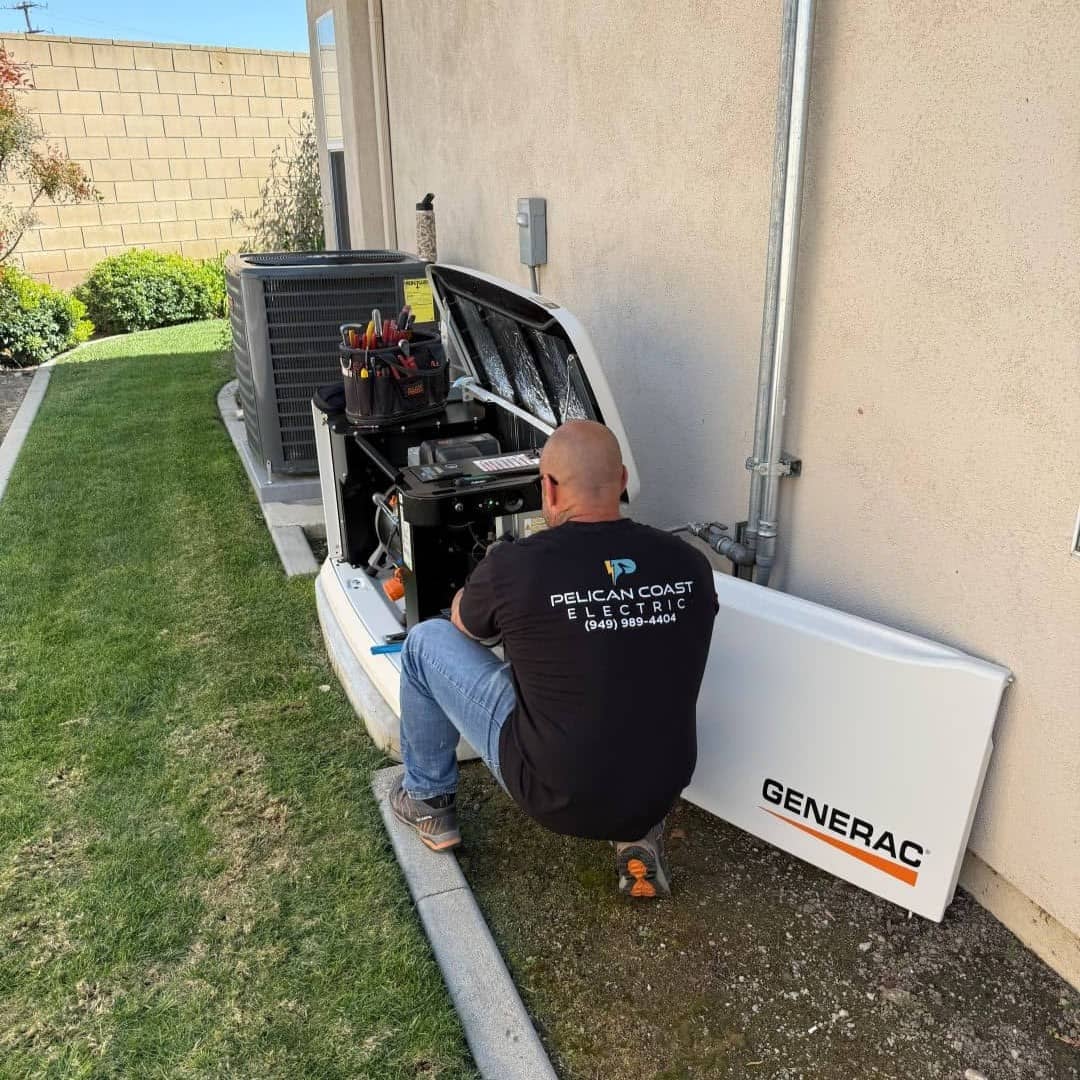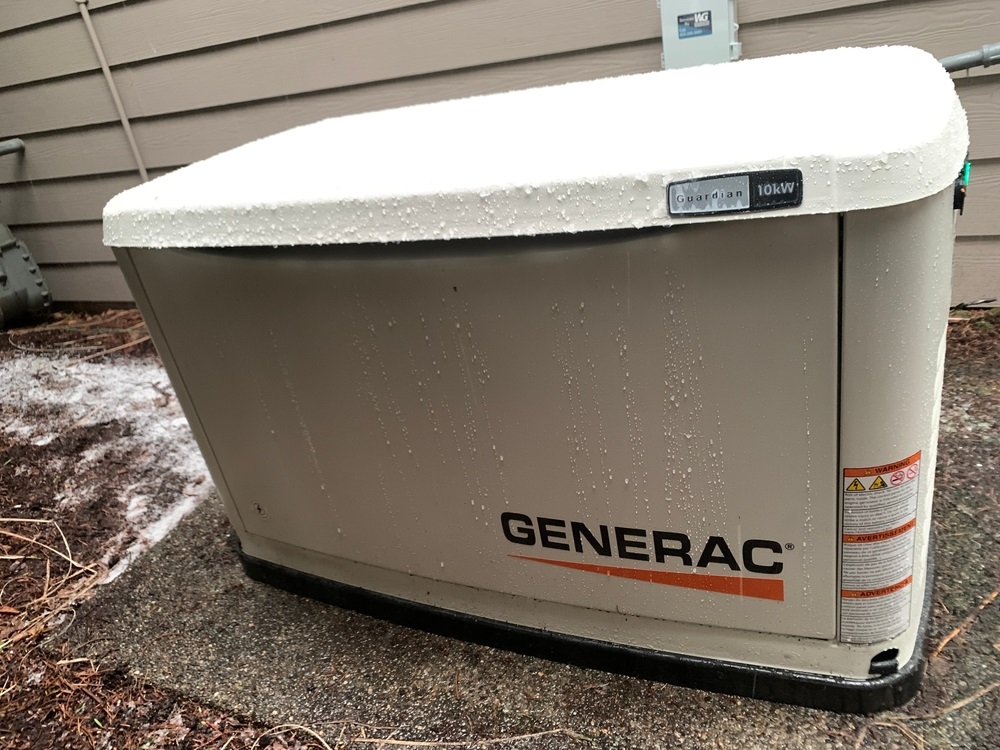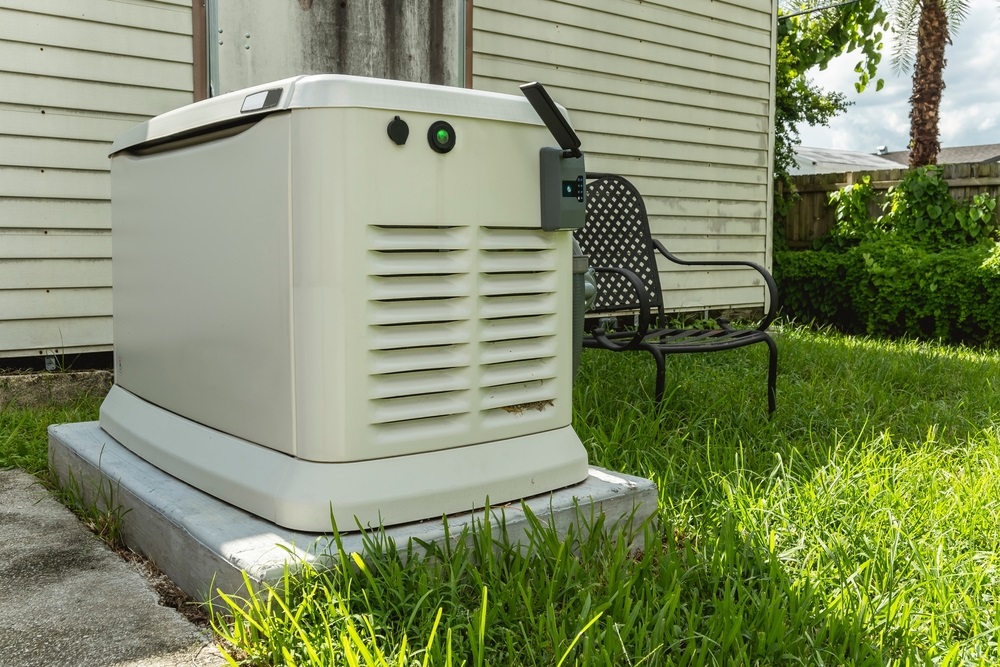In a world where electrical outages are increasingly common due to severe weather or grid failures, home generators have become essential. For homeowners in San Francisco and beyond, understanding how home generators work is crucial for choosing the right backup power solution. At Pelican Coast Electric, we specialize in providing dependable, expertly installed generators that keep your household running smoothly during any outage.
The Basics of Home Generators
What Is a Home Generator?
A home generator is a backup power system that provides electricity to your home when the main power grid fails. These systems automatically detect power loss and kick in, ensuring your appliances, lights, HVAC systems, and medical devices remain functional.

Core Components of a Home Generator
A typical home generator consists of several critical parts:
- Engine: The powerhouse that drives the system.
- Alternator: Converts mechanical energy into electrical power.
- Fuel System: Supplies the necessary fuel—natural gas, propane, or diesel.
- Voltage Regulator: Maintains consistent voltage levels.
- Cooling System: Prevents the engine from overheating.
- Lubrication System: Ensures all moving parts function smoothly.
- Control Panel: Interface to manage and monitor operations.
- Battery: Starts the generator engine.
- Transfer Switch: Automatically toggles between utility and generator power.
Read more: How to Choose the Right Home Generator?
How Long Does It Take a Generator to Start Working?
When a power outage occurs, most modern standby home generators begin working within 10 to 30 seconds. This rapid response is facilitated by the Automatic Transfer Switch (ATS), which detects the power loss and signals the generator to start almost immediately. The brief delay allows the system to confirm that the outage isn’t just a short flicker, preventing unnecessary cycling. Once the generator is running and producing stable electricity, the ATS switches your home’s electrical load to the generator, ensuring that lights, appliances, and essential systems resume operation quickly. For homes equipped by Pelican Coast Electric, this transition is smooth, reliable, and virtually seamless—providing peace of mind when it matters most.

How Home Generators Operate
Automatic Transfer Switch (ATS) Functionality
The Automatic Transfer Switch (ATS) is the central nervous system of a home generator setup, enabling the generator to function with minimal human input. It monitors your home’s utility power around the clock and instantly detects when a power interruption occurs. Upon sensing a disruption, the ATS quickly signals the generator to start. Once the generator is up and running, the ATS disconnects the home from the power grid and safely channels electricity from the generator to your home’s circuits. This entire process usually unfolds within 10 to 30 seconds, ensuring a nearly seamless transition that minimizes downtime and keeps essential systems like lighting, refrigeration, and internet connectivity running without a hitch.
Beyond its core switching function, modern ATS units often include smart features such as remote diagnostics, load prioritization, and weekly self-tests. These advanced capabilities help homeowners stay informed and prepared, even when they’re not on-site. For instance, some ATS models can prioritize critical loads, ensuring life-support systems or heating units receive power first during partial capacity scenarios. At Pelican Coast Electric, we install and configure ATS units tailored to each home’s specific requirements, ensuring optimal performance and safety. This smart integration of technology and automation is what makes a home generator system truly hands-free and reliable during emergencies.
Power Generation Process
Once activated, the generator’s engine begins by drawing in a mixture of fuel and air into its combustion chamber. This fuel—commonly natural gas, propane, diesel, or gasoline—is ignited through a spark or compression, generating controlled explosions that drive the engine’s pistons. These pistons, in turn, rotate a crankshaft, producing mechanical energy. This mechanical motion powers the alternator, where a rotor spins inside a magnetic field. Through electromagnetic induction, the alternator converts this mechanical energy into a flow of electrical current.
The generated electricity then passes through a voltage regulator, which stabilizes the output to ensure consistent and safe voltage levels. This power is routed through the generator’s control panel and distributed throughout your home via the automatic transfer switch. The switch isolates the generator’s power from the public grid, preventing hazardous backfeeding. During operation, the generator dynamically adjusts its output to match your home’s power demands, ramping up during high-usage moments and scaling down when less power is needed. This ensures both fuel efficiency and uninterrupted electrical service, keeping your home secure and fully operational during outages.
Restoration to Utility Power
When grid power is restored, the Automatic Transfer Switch (ATS) doesn’t immediately transfer your home’s power source back to the utility. Instead, it enters a monitoring phase to ensure that the returning electricity is stable and within safe voltage and frequency parameters. This verification period typically lasts several minutes and acts as a safeguard against brief or unstable power returns, which could otherwise cause harm to your appliances or trigger unnecessary generator cycles.
Once stability is confirmed, the ATS initiates a smooth switchover by disconnecting the generator and re-engaging the utility grid as the primary power source. The generator then enters a short cool-down phase, continuing to run briefly to normalize internal engine temperatures and prevent wear. After this phase, it shuts off completely and returns to standby mode, ready to activate again should another outage occur. This intelligent automation, a hallmark of systems installed by Pelican Coast Electric, ensures safety, efficiency, and peace of mind without requiring homeowner intervention.
Types of Home Generators
Standby Generators
Standby generators are permanent fixtures outside the home. They are connected to your home’s electrical system and fuel supply, offering an automatic, seamless transition during power outages. These are ideal for homeowners looking for a “set it and forget it” solution.
Portable Generators
Portable generators are smaller, mobile units that require manual setup. They’re suitable for temporary use or powering only essential devices. These are common in smaller homes or for occasional use.
Inverter Generators
Known for their quiet operation and clean energy output, inverter generators are perfect for powering sensitive electronics. They are portable but more sophisticated and efficient than standard portable generators.

Fuel Options for Home Generators
Choosing the right fuel type is essential for efficiency and longevity:
- Natural Gas: Reliable and clean; requires a natural gas hookup.
- Propane: Long shelf life and cleaner emissions; good for long-term storage.
- Diesel: Efficient and powerful, though emissions are higher.
- Gasoline: Convenient but best for short-term use due to volatility.
Benefits of Installing a Home Generator
Uninterrupted Power
Generators ensure your lights, fridge, internet, and HVAC systems remain operational during blackouts.
Safety and Security
Your security systems and essential medical devices won’t fail during outages.
Convenience
Automatic standby systems require no manual startup, maintaining comfort without effort.
Increased Property Value
A professionally installed generator from Pelican Coast Electric can boost your home’s market appeal and value.
Pelican Coast Electric’s Generator Services
Professional Installation and Consultation
Our team at Pelican Coast Electric provides end-to-end support—from assessing your home’s power needs to installing the perfect generator. We handle all the electrical work and ensure everything is code-compliant.
Ongoing Maintenance and Support
Generators require regular servicing to function correctly. We offer scheduled maintenance packages to keep your system running smoothly year-round.
Emergency Support
When your power fails, you can rely on Pelican Coast Electric for rapid troubleshooting and repairs. We’re committed to your safety and comfort.
Getting Your Own Home Generator
Investing in a home generator is a proactive step toward ensuring your household remains comfortable, safe, and functional during unexpected power outages. The process begins with evaluating your home’s energy needs—considering which systems and appliances you want to keep running, such as HVAC units, refrigerators, medical equipment, or sump pumps. From there, professionals like the team at Pelican Coast Electric can help you select the right type and size of generator, whether it’s a fully automatic standby system or a more flexible portable model. Expert installation ensures your generator integrates seamlessly with your home’s electrical system and complies with local codes. With proper setup and routine maintenance, your generator will serve as a reliable power source for years to come, giving you one less thing to worry about when the lights go out.
Read more: Solar Batteries vs. Generators
Frequently Asked Questions
WHAT SIZE GENERATOR DO I NEED FOR MY HOME?
The right size depends on your home’s total power requirements. A professional from Pelican Coast Electric can evaluate your needs and recommend an appropriately sized unit.
HOW LONG CAN A HOME GENERATOR RUN NON-STOP?
It varies by fuel source and model. Many standby generators can operate for days if connected to a continuous fuel supply like natural gas or propane.
IS IT SAFE TO INSTALL A GENERATOR MYSELF?
It’s not recommended. Installation involves electrical and gas connections, which must comply with local codes. Always hire licensed professionals like Pelican Coast Electric.
HOW OFTEN SHOULD A GENERATOR BE SERVICED?
At least once a year or after 100 hours of use. Regular oil changes, filter replacements, and system checks ensure reliability.
WHAT IS THE DIFFERENCE BETWEEN PORTABLE AND STANDBY GENERATORS?
Portable generators are mobile and manual, while standby units are fixed and automatic. The choice depends on budget, home size, and power needs.
Conclusion
A reliable home generator can be a lifesaver during a power outage, providing peace of mind and ensuring your daily routine isn’t disrupted. Whether you need a robust standby system or a compact inverter model, understanding how these systems work is the first step toward a smarter, safer home. With expert installation and service from Pelican Coast Electric, your home will always be ready—no matter what.
Ensure your home stays powered and protected—contact Pelican Coast Electric today to schedule your personalized home generator consultation and installation.


